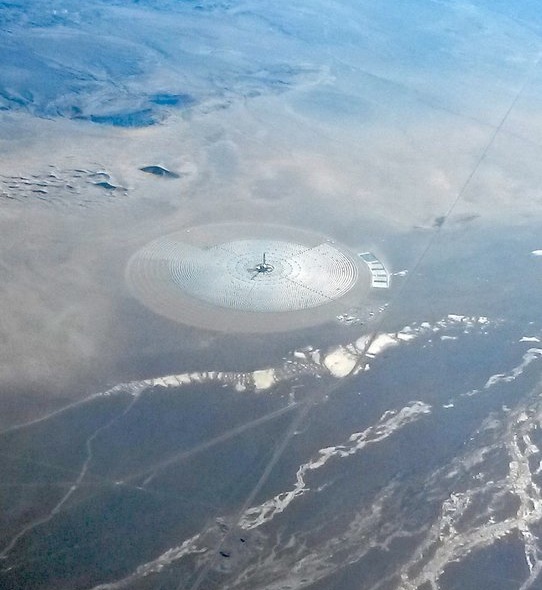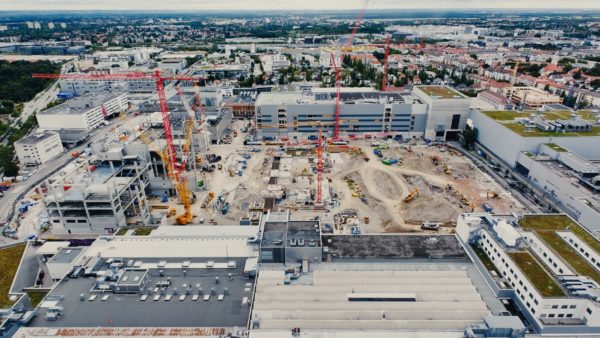19 February 2014
The world’s largest solar thermal power plant has been commissioned in Death Valley California amid protests from environmental groups and claims that it is already obsolete.
The Ivanpah Solar Electric Generating System, which covers five square miles of the Mojave desert, has a maximum generating capacity of 392MW-enough to supply about 140,000 homes.
It uses 347,000 mirrors, each the size of a garage door, to direct the sun’s energy at three 40-storey “power towers” which contain a water-like substance that boils to drive a steam turbine.
The plant was developed by Bechtel and solar developer BrightSource at a cost of $2.2bn.
The main investors in the project are New Jersey-based generator NRG Energy, which put in $300m, and Google, which put up $169m. A $1.6bn loan guarantee was provided by the US Department of Energy.
“The Ivanpah project is a shining example of how America is becoming a world leader in solar energy,” energy secretary Ernest Moniz said after attending a dedication ceremony at the site. “This project shows that building a clean-energy economy creates jobs, curbs greenhouse gas emissions and fosters American innovation.”
Ivanpah is the largest of a spate of solar projects that have begun operating in the past two years, spurred in part by an investment tax credit that expires at the end of 2016. Most of them are in California, where state law requires utilities to use renewable sources for one-third of the electricity they sell by 2020.
But solar plants have been criticised for the relative expense of the power they generate. Ivanpah has cost about four times as much as a conventional gas-fired plant but will produce less electricity.
Experts have estimated that electricity from solar projects will cost at least twice as much as electricity from conventional sources. The Wall Street Journal reports that “neither the utilities that have contracted to buy the power nor state regulators have disclosed what the price will be, only that it will be passed on to electricity customers”.

An aerial view of the Ivanpah site. Speculation has mounted that it will be one of the last big solar thermal plants to be developed in the US (Vzaliva/Wikimedia Commons)
Some commentators have expressed the view that the technology behind solar thermal will soon be superseded by its photovoltaic (PV) rival.
The Business Insider website points out that Warren Buffett, the legendary American investor, has paid $2.2bn for a nearby PV plant that will generate 50% more electricity. The Antelope Valley Solar, which will have the largest solar array in the world, is due to be finished by the end of 2015.
Meanwhile, The New York Times reported that since the project began, “the price of rival technologies has plummeted, incentives have begun to disappear and the appetite among investors for mammoth solar farms has waned”.
Although several large projects have been coming online in recent months experts say fewer are beginning construction and not all of those under development will be completed.
Environmental groups have criticised the plant for disrupting the habitats of tortoises, coyotes, kit foxes and bobcats. It has also been alleged that the “thermal flux” produced by the mirrors, which heat the water to 530°C, can kill birds that fly above it.
Eric Davis, the assistant regional director for migratory birds at the US Fish and Wildlife Service’s Sacramento office, told the Wall Street Journal: “We’re trying to figure out how big the problem is and what we can do to minimize bird mortalities. When you have new technologies, you don’t know what the impacts are going to be.”
An environmentalist group, the Western Watersheds Project, is pursuing a lawsuit against the federal agencies that reviewed the Ivanpah project. Its California director, Michael Connor, said alternatives to the site were not considered and serious environmental impacts, including fragmenting the tortoise population, were ignored.
Meanwhile, the Greentech Solar website has reported that China is due to open solar power facilities with a generating capacity of 12,000MW in 2014. This is greater than the whole of the US.
Japan will bring 7,500MW of solar power online, and the US will install 5,300.










